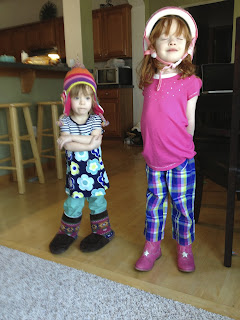Your day may look different than my day. Your year may look different than my year. This is no different with homeschool. Personally, my typical homeschool day changes from year to year. Based on how old my children are, whether they have become morning or evening people, how many children I have that year, and what our outside activities may be, our daily routine is adjusted to fit our needs.
When my boys were 6 & 9 years of age, we tried to set up a school room in the basement and adhere to the 8am to 3pm schedule. I bought two sets of used curriculum, a new set of Southwestern Student Encyclopedias and a whole bunch of school supplies, marker boards and cheerful paper signs and pictures to put up on our walls. We read, highlighted, and took notes throughout the day, with quick breaks and a steady pace.
The housework went to the wayside. I was pregnant, tired, and nauseated all of the time. My boys quickly got burned out. I was obsessed with righting down every little thing they learned and documenting it in our syllabus. Nothing excited me more than to see those school hours add up! I refused to take days off, except for all of December. Summer was no more than two short months. My children quickly learned to despise me.
The baby arrived half-way into that school year and I learned the benefits of homeschooling. I didn't have to drive the kids to school early in the morning. If the baby slept in, we slept in. (My kids never slept thru the night until they were past the age of three. This baby wasn't any different and kept us up all night long, every night.) So, this was one benefit. The other was the lack of homework assignments to keep up with; the laundry that piled up wasn't a big deal, due to the fact that we stayed in our pajamas all day anyways; and I didn't have to show up for parent-teacher conferences, school performances, or pick them up from school/bus stop.
We also learned to take things slowly. We read more. We watched documentaries together. Every morning started out with PBS's, "Sid the Science Kid". We spent hours outside discussing Science and other interests.
As the baby grew older and we started a new school year, we would school the morning kid in the morning; break for an early lunch; come together for Science and History when the baby napped; and then school the evening kid at the end of our day. Whomever did not have school at the moment, entertained the baby. Chores were done between 4 and 5pm, so that when Dad arrived home (if he wasn't out of town as usual), the house was picked up and we were all free to relax for the rest of the day.
As the boys turned 9 & 12 years of age, baby number four arrived. We learned to complete individual learning by ourselves, with needed help in the same schedule as above (morning time with mom for one boy and afternoons with mom for another). So, half of the day was spent in one's room doing online geography, typing, writing, reading for literature and history, as well as piano and computer lessons. The other half of the day was spent with mom or dad, learning science, math, and home ec, as well as exercising and watching documentaries. Toddler number three learned to be involved in computer programs such as ABCmouse.com and starfall.com, or color, or watch PBS or Sprout or Nick Jr programs. We took advantage of naps with baby four to get housework done. The boys did housework with me to learn to cook, clean, do laundry and pay bills.
Subjects are usually scheduled by days, but not by the hour.
Monday and Wednesdays we accomplish: Math, Reading, Health/Gym/Swim Class for Homeschoolers at the YMCA, Science, Geography, Computer, and Piano. Tuesdays and Thursdays include: Math, Writing/Grammar/Spelling, Exercise, Science/Art, History, Spanish, and Home Ec. Fridays are for: Math, Reading, History, Spelling Quiz, and for Catching Up.
Religion and Hobbies are a part of our everyday lives, as well as other living skills. Sports and other classes are sporadic and happen when we can fit them into our lives.
Toddlers should be left to play and be read to. Preschoolers should be gently encouraged to recognize the alphabet and numbers; to cut and color; to write letters and numbers freely; to draw freely; to be read to; and to play. Sit down workbooks should be limited to a few minutes, a few days a week. Computer play and programs are very much encouraged in today's world. Elementary kids should have just a couple of hours a day of sit-down work, increasing by 20-30 minutes each year. High school students should be up to 4-5 hours, more if desired. These are widely held beliefs/opinions. Each child and each family is different. Not all students and families fit into the same size of clothing.

No comments:
Post a Comment